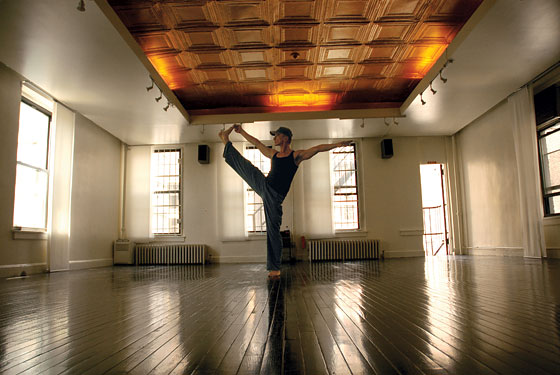
How It Works: The most-profitable yoga studios are efficient: They fill four to five classes daily, plus private classes. Joschi, which opened in October, aims for the broadest client base by offering 25 varied weekly classes ($17) rather than specializing in one branch of yoga. Joschi Schwarz teaches 75 percent of the classes himself, which saves on teacher costs and helps brand him as a guru. Most studios hope to be profitable within two years. “We aimed for six months,” says business manager and co-owner Monika Werner. “We’re not quite there yet. Joschi and I work for free.” The studio needs roughly 530 students a month to break even; they’ve recently had closer to 450.
Employees: Seven freelance teachers, plus Schwarz and Werner.
Annual Revenue: $77,940 (with $24,000 in losses) projecting from earnings thus far.

Monthly Overhead Costs: Rent: $4,000; teacher payments for eight weekly classes: $1,400; insurance: $90 (“It’s low—that was a surprise,” says Werner); loan payments: $900 (Joschi took out a $100,000 loan; he spent $50,000 on studio and shower renovations).
Best Ways to Make Money: Private classes ($95 per hour), Joschi’s bread-and-butter. Members ($140 for one-month unlimited). “It’s the same principle as a gym membership,” says Michele Campaniello, a former studio owner. “You count on people not showing up.”
Best Ways to Lose Money: Paying teachers more than class revenue. “Yoga studios generally pay a $50 to $75 flat rate per class, sometimes with a bonus fee per student over a dozen,” says longtime teacher Matthew Seidman. Joschi pays $40 to $50 per class, needing four students to turn a profit.
Other Ways to Cash In: Teacher training ($2,000 to $3,000 per student): three-month, 225-hour classes for a few dozen enrollees. Studio rental ($45 to $70 per hour): Joschi’s studios are rented to other teachers, theater and dance auditions, and for social events.
Added Value: Few studios in Manhattan survive three years, and fewer turn more than a 10 percent profit. “Honestly, I would do private lessons in people’s homes instead,” says Campaniello. “You make $100 a session with no overhead.”
New Yorkonomics: Money isn’t all there is to a job. Economists also consider “compensating differentials,” nonmonetary pros and cons. A meth dealer needs high returns to take on the risk of arrest, and apparently people are willing to earn much less for the pleasures of being a yoga guru.